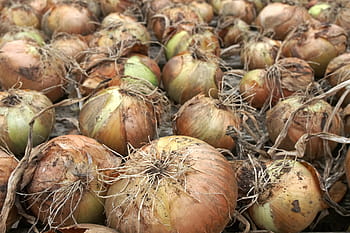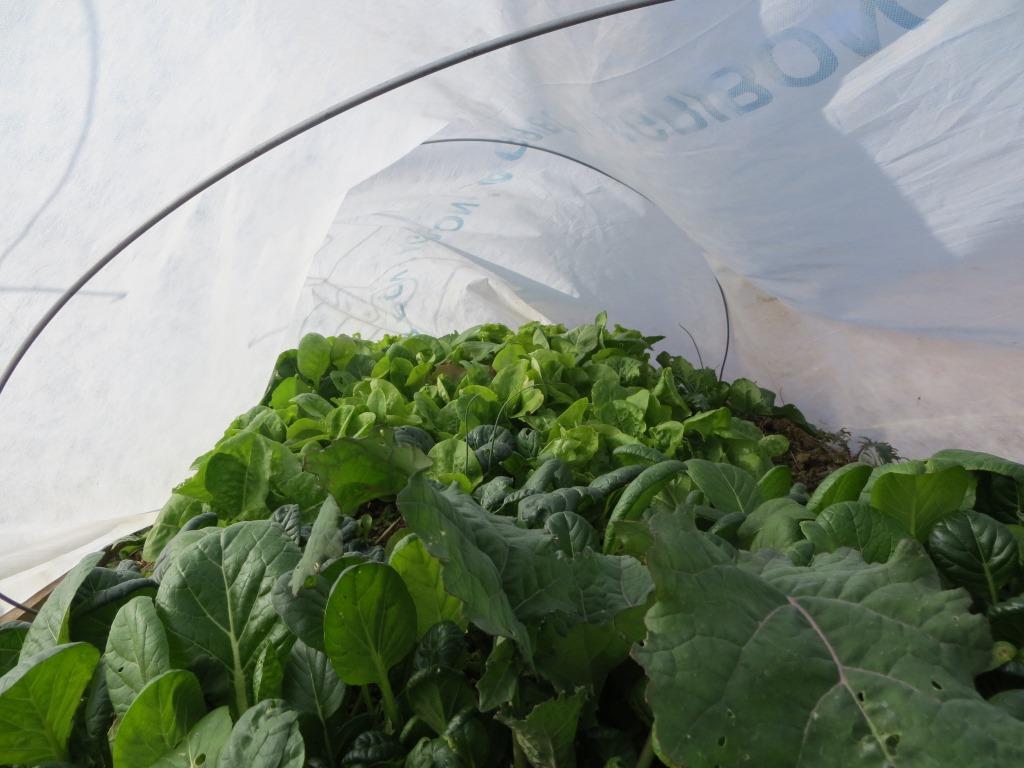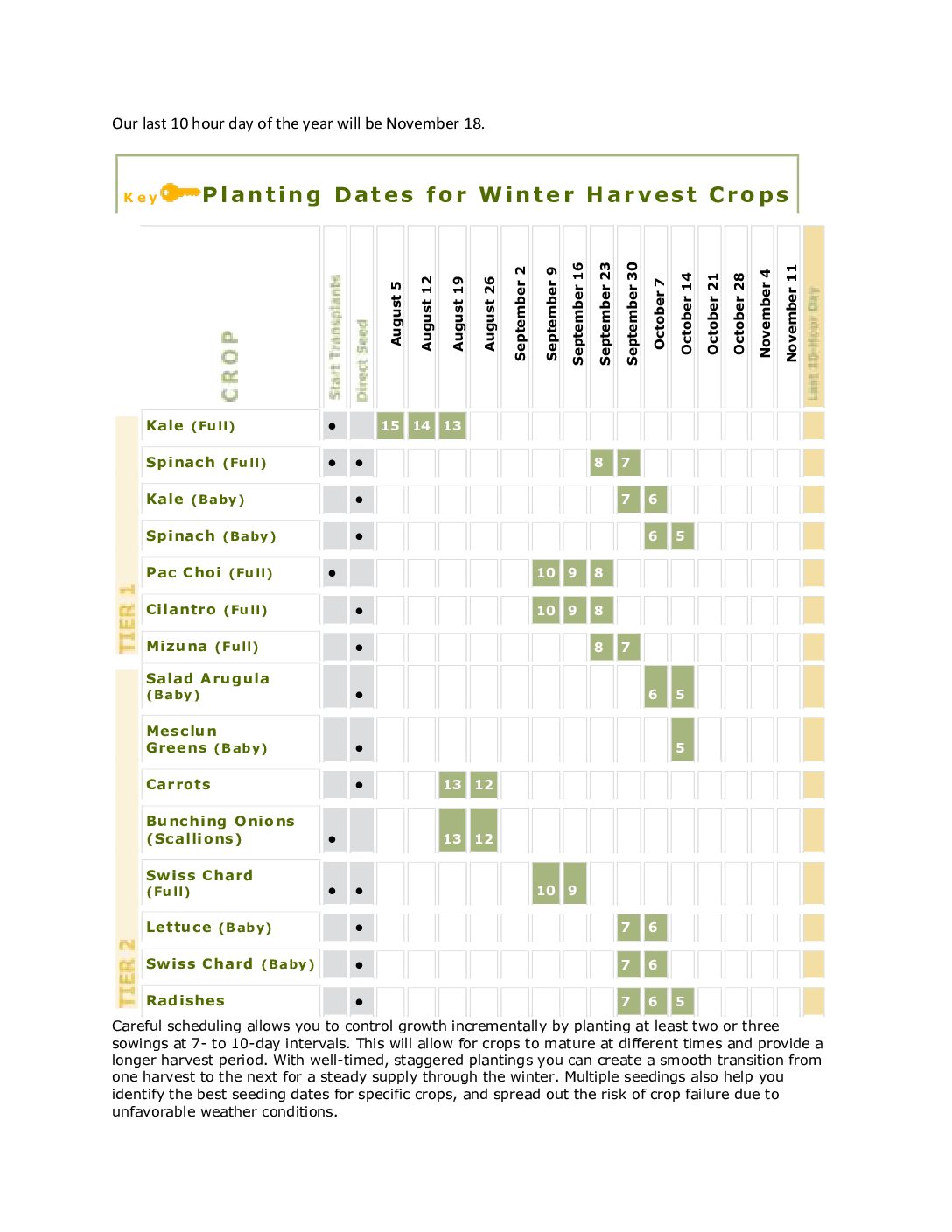It’s finally August, and our gardens are producing so much! What a joy to have fresh options to choose from for our culinary adventures every night. And we’re canning and freezing too. Food preservation by canning and freezing is one method of season extension, where we can enjoy our homegrown goodness throughout the winter. Another way is to store food in a root cellar. Potatoes, carrots, beets, and other storage roots are great candidates for the “root” cellar, while garlic and onions keep well somewhere cold but a bit drier, and winter squash does well in a room that stays 50-60 degrees. Maybe you have a closet or a porch where you can stash some of these storage veggies for a while? Check out this list for Storage Requirements of Vegetables and Fruits from Mike and Nancy Bubel.

Have you ever gone out to the garden hoping to harvest a few more peppers, only to find they’ve sadly been turned to mush by the frost? Keeping an eye on the weather and covering up any plants that are doing well with row covers is another strategy to keep your harvest going a little longer into the fall. Row covers can keep your plants above freezing as long as it’s just a light frost of 28-31 degrees. Cucumbers, peppers, tomatoes, squash, melons, beans and corn are all plants that would be killed by any freezing weather. Broccoli, cabbage, lettuce, radish, peas, potatoes and spinach will tolerate light to moderate frost down to 24-26 degrees, and beets, carrots and kale can be hardy down to 20. The row cover can be placed directly over the crops, but if you want them to withstand below freezing weather for an extended time you may want to use hoops to support the cover. You can cut 6 1/2 foot lengths of wire from a roll of fence bracing wire, and place them about every four feet or so. Make sure to cut your row cover long enough to securely reach the ground at either end, and weigh it down with rocks against the wind. If you use anything heavier like plastic, be sure to monitor the temperature inside. You can place a thermometer in a small white slatted box that sits on the soil in the center of the bed. Aim for 65 degrees in early fall, 60 in late fall and winter and 70 in spring. Err on the side of cooler rather than warmer but close them up in time to keep them above freezing overnight.

And the big question is, what can I still plant now, in August, and what is the latest that I can plant different crops and still get a harvest before winter sets in for real? That is a question for Persephone. Even plants that can survive colder temperatures will not grow much in the dark of winter. In general, plants tend to grow well as long as they can get at least 10 hours of sunlight a day. Once the daylength gets shorter than that, they may stay alive, but they won’t do much growing. Here in Hillsboro, WV, our last 10 hour day for the year will be November 18. So any crops we plant will need to be able to reach harvestable size before then. If we can keep them alive through December, they’ll just stay the same size. It will be kind of like storing them in the refrigerator. If they’re still tiny, we may be able to keep them alive until the days are over 10 hours again, and they will resume growing around January 22. This is also the reason it doesn’t help to start your seeds for spring transplanting any earlier than January 22nd. They may germinate just fine, but won’t take off growing until they get enough light. Johnny’s Seeds has a chart of recommended planting dates where you can count back the number of weeks from November 18 that each crop needs to mature: Planting Dates for Winter Harvest Crops. For example, if you want to harvest radishes all winter, you should plant them 5-7 weeks before your last 10 hour day, which would be during the first half of October for us. You will need to keep them from freezing but once they are full size you won’t have to harvest them right away like you do in the summer. You can pick as many as you need each day. Any radishes that are planted before October will need to be harvested when they are ready because if not they will go on to be overmature. Carrots take longer, so if you don’t get them in the ground by the end of August you’ll have to wait for them to start growing again in the spring.
Doesn’t that sound like fun, harvesting your salad from beneath the snow? Hard to imagine now when the days are in the 80s. What will you plant now for your winter garden?



Karline and staff, thank you for the experience.
Thanks for this information. Last year I planted a row of mixed lettuces on August 22, and I kept a row cover on it all winter. During the winter I picked it a couple of times, then from March on, it supplied us with lettuce until June 23rd, when it finally started going to seed. I totally intend to have another row of lettuce this winter, as well as spinach. Row covers are amazing!
We have planted late peas and lettuce for this fall, frozen blueberries and raspberries, and canned green beans, black raspberry jam and deer stew, I hope to can more full dinners.
Great post with lots of useful info! I look forward to extending my season with these tips and implementing a row over and cold frame this season ! Thanks
Great info! I look forward to trying out my row cover and a cold frame to get some extra harvests this season! Thanks for the storage tips as well
What great information. I am looking forward to salad all winter. Yum.
Thank you for the post! We have put in the last of the bush beans (which we found last year will keep going until November if we are diligent about keeping the row covers over at night). We have replanted Yukon potatoes (3 weeks ago?) to hopefully get October baby potatoes. Plants are doing WELL right now (experiment of only a couple so we shall see). Getting ready to plant 60 day golden turnips! excellent alternative to potatoes and store way better over winter. We are looking at getting next years garlic and onion sets in in the next couple of weeks so we have early harvest next year. Lessoned learned from last year! get in NOW so they can root in good so when the ground heaves as it frosts/freezes they won’t pop to the top! Aiming to get some spinach in. I have been known to plant carrots LATE to get early ones the following year! Will be using row covers extensively on the beans! Most of my beds are still taken up with tomatoes and other warm weather items.
Welcome info on the beans! I was just wondering if I could get in some before it gets cold. My spring crop was not so good and I’m craving more beans. So that’s where my row cover is going.
Thanks for the information id like to do a fall crop!
Looking forward to planting some carrots and lettuce and spinach. I was unable to get them in this spring because of making a new garden. The garden is
ready and producing the warm weather crops and using the row covers will help me harvest some of the cool season crops longer.
I would love to try row covers. They sound amazing, especially for beets, lettuce and spinach. Hopefully will get fall crop planted soon.
I like planting spinach and bologna choi in the fall. This year I will also try lettuce and cabbage. I have been wanting to try row covers so I’m excited!
Great info, didn’t know about hours of light! And with climate change, I think fall planting will be more important for growing some cool season crops. I had no luck with beets or spinach this past spring, and lettuce bolted quickly. But at present(nov. 6th), all are growing and thriving with row cover to protect from heavy frost. Most beautiful lettuce I have ever grown!
I have never planted a fall crop, but would be willing to try. Thought would be to cold. Could try row covers and find out. Potatoes did well, medium size. Store in root cellar, no problem keeping.
Thank you for this info! It is inspiring to keep going (and maybe the pests won’t be so bad in the cooler weather??) Also, wondering if there is any info on how to store cabbages….I’ve never tried keeping them. And as for the root crops, do you need to put a good layer of straw on top of them or anything? Thanks!
We have never tried row covers to extend the season, and probably will not this year because our neighbor hates our garden enough already.. but will keep it in mind in the future. I have experimented before with digging up some pepper plants and bringing them inside for the winter with mixed results, and would like to try that again this winter. Just have to find a good spot to keep the kids from getting to them. We will be planting some crops for fall/winter harvest though.
Thank you for this information. Especially useful was to learn the critical dates, e.g. Nov 18. We are experimenting with a winter crop of mixed lettuce, spinach, radish, tatsoi, arugula, broccoli, chard and beets in a newly tilled area of the garden. It’s a bit rocky on a mountain slope, but historically things grow here reasonably well. Planted early to mid September and thanks to the warm sunny weather we had, we hope to grow these hardy varieties to edible stage. We use row covers, they are a definite must-have for winter garden as well as for pest control. If winter gets too harsh, we hope to double the layers, provided we have enough length of row covers in supply. No shortage of rock supply here to hold them down!
I am impressed that our tomatoes in the high tunnel are producing up until November, without much help (not much rolling up of sides during close to freezing temperature nights). Our kale is still going strong and looking beautiful, in the high tunnel especially, but also in the field. We have planted fall spring mix in the field, and head lettuce in the high tunnel and they are thriving. Today, we harvested some spring mix and were happy with the results! Thanks to all the participants during this wacky year, and of course thank you Karline!!
I wonder what harvesting challenges are presented by cooler, frost -touched earth. Are the crops more difficult to pull? I’ve noticed that some of our kale seems to be less resistant than others. While we haven’t had very many frosts, certain leaves seem veiny and wilty. I suppose this could be the drier air in the high tunnel as the humidity decreases with the temperature. Perhaps we need to adjust our watering routine and expectations with the humidity? Another thing that I’ve found interesting is that as the temperature gets cooler and the humidity drops the kale seems to weigh far less per leaf. When it was raining heavily in early October, the kale in our campground garden was extremely hefty and now it takes a much fuller bag to reach the same weight as before!
I know that harvesting beneath the snow could produce some amazing photo-ops, but my fingers wince just thinking about it! I’m sure you’d have to gear up properly to get the job done.
Are you ever able to completely eliminate the effects of winter and produce an “infinite harvest” in a controlled greenhouse system? If not, then I wonder what mechanisms in the plant create the effects of the season. and how it is able know in spite of all of its data insisting that it is “summer” inside the greenhouse.
Interesting stuff to think about!
Having a high tunnel really makes a difference if you want to enjoy harvest outside of “normal” time. Thanks!
Wonderful advice and information. I love row covers both for keeping certain insects out and extending harvest time. The planting dates for winter harvest chart is very useful. I missed getting crops in this year but had successful onions garlic and scallions this spring.
I appreciate the teams willingness to answer questions and support local growers! This is a great program that should continue for years to come!
I harvested lots of greens, beans,and cucumbers this season. My carrots potatoes,onions and beets did well. For some reason peppers don’t seem to do well in my garden. I really appreciate the guidance and support from Grow Appalachia. It got me organized with my seeds ,garden planning, planting and harvesting. Learned some tips about canning. I also appreciate the gardening supplies. I try to grow all winter and now know more about how to make it work. I don’t have row covers but will look into them. It was a funny healthy learning experience.
Fascinating! I never knew about the 10-hour sunlight rule, I just thought if you could keep a good temp like in a cold frame or high tunnel, you could continue to grow just fine. (Of course, I’ve never tried a fall planting before or I would have found this out the hard way!) Now I’m wondering if you could extend your season by adding UV lights to your cold frames…
This was a wonderful program , that my husband and I really enjoyed. Except for the creature that ate all my green beans plants. LOL
I enjoyed seeing how other gardeners worked their gardens.
I enjoyed classes on starting our own seeds.
Hope this program is available next year.
We had a pretty hot summer here on the hill, good crop of cucumbers, beans and some squash. We decided to plant some chard and collards earlier than suggested, even though it was still warmer than they like outside. The trick that worked for us was planting them underneath the cucumber trellis, opposite the path of sun, that gave sufficient shade and kept these fall greens cool enough for a nice start-up. Thanks for the program, we all find it useful and supportive.
I have learned several new things; the 10 hour growth rule and I have also become better organized in planting dates and what things to plant. I have appreciated the tools, some of which I wasn’t familiar with. I am still harvesting peppers and a few tomatoes. I have canned up a storm this summer and fall and look forward to harvesting late crops too. This is such a rewarding program and I am pleased to participate. I also look forward to getting our high tunnels up by next spring!
Hello, it’s Jeanne, a/k/a Mrs. Spoons. I signed up for the Grow Appalachia program with great intentions for having a garden extraordinaire in our still-under renovation home. I attended the first two introductory Zoom classes which aside from learning important things about soil prep, plant selection, pest control and garden maintenance from enthusiastic and knowledgeable Grow Appalachia instructors, I was able to connect with other student gardeners from the region. When my plans to develop my garden fell through for personal reasons, I was still encouraged by the staff to keep involved, that a garden would be in my future. I was able to attend the Canning Work Shop in August. This event bolstered my confidence that when my garden is finally in place, I will reap even more benefits for the balance of the year. Garlic Beans, anyone? Pickles? It was also a delight to personally meet some of the instructors at this workshop as well as the classmates I had met only in the Zoom chat rooms. As a newcomer to the State of West Virginia, I felt welcomed. Hurry Spring.
Thanks for the info on fall crops. I got so busy selling gumbo and pulled pork at events in September and October that my garden suffered. I do have Brussels Sprouts ready to harvest. I harvested red and green cabbages. Delicious! Red Jalapeño peppers are still being harvested. Onions and garlic finally getting pulled. Getting Ready to plant garlic-rows were filled last week. Fairly good year.
Lots of good info in this article! Season Ext is a great way to have greens throughout the winter if planted at the right time. Our kale makes it through the inter no problem without the use of Remay in the tunnel. Lettuce and raddish can use a remay cloth in the tunnel as they are a little bit more tender to colder temps.